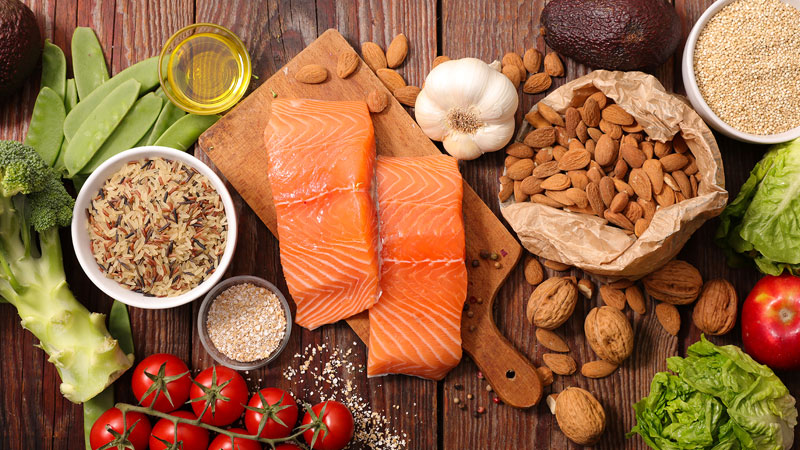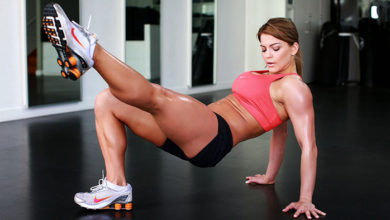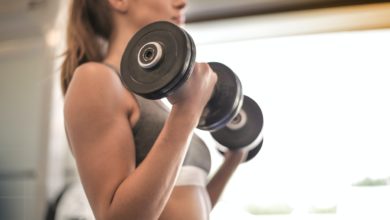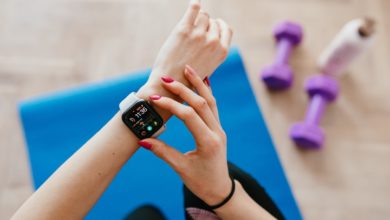
Take the First Steps to Getting Healthy and Kick Ass at It!
As the months have passed you’ve let your health start to slide. You might have piled on a few pounds or you’ve just not been as active as you should. But now it’s time to change.
You’re not to blame.
With today’s hectic lifestyle and less time to spend on you, many women find they’re just too busy to focus on themselves.
As time has passed you’ve noticed that things have gone too far.
Your toned and athletic body has disappeared and your health has gradually started to get worse. You don’t eat healthily like you used to and your gym membership is sat collecting dust.
The good news is though, that with the small changes in this article you’ll be able to turn things around in simple, manageable ways.
It’s time to make those changes and own it.
Reclaim your body, your confidence and mostly importantly, get back what makes you, you!
Here is your first steps to getting healthy program…
#1. Assess your starting point
Whether its a builder coming to survey a house remodeling, a stylist wanting to give you a full makeover, or a personal trainer wanting to get you fit; all journeys need a clear starting point.
Your first task to getting healthy is to find a quiet space, grab a pen and paper and make a food diary for the last 3 days.
What did you eat? When did you eat it? And how much are you eating each day?
You can then run it through a calorie calculator to see how you pitch against healthy levels.
Put your details in honestly and truthfully and you’ll be given a daily calorie intake that you should be sticking to.
If you’ve been going above it consistently, you might find that you’ve been slowly putting extra fat on.
If you’ve been under-eating you might find that you are underweight, weak and have little endurance.
You won’t lose weight or excess body fat if you go above your daily calorie count.
Next, make a list of any physical activities you take part in. It could include sports, the gym, walking, housework – anything that either gets your heart rate up or entails you being on your feet and moving around.
Finally, take measurements of your weight, waist, hips, arms and legs. You can revisit these every so often to chart your progress.
Once you’ve done this, you’ve got your starting point.
[infobox]All journeys need a starting point. Take the time to plan your goals, assess your objectives and make some honest decisions about where you are right now.
[/infobox]#2. Don’t go over your daily calorie count
At this stage you’re hopefully full of motivation to make big changes.
And that’s great.
If not, don’t worry – your enthusiasm will build in time as you start to see the results of getting healthy.
Your first, and most important rule, is to make sure you don’t go over your daily calorie count.
If you go over your calories, your body will start to store the excess energy as fat. But if you go just below your daily count, you’ll unlock your fat cells and begin to use that excess energy for fuel.
A 20% deficit (around 500 calories) is great for weight loss.
As the days pass you’ll notice that your clothes fit better and you begin to lose the pounds you’ve built up over the months.

Calories are the key to getting healthy. If you eat too many, you just can’t trigger fat loss. But reigning in your energy intake will help you get leaner in no time.
[/infobox]#3. Build up your activity levels
There’s no need to start hitting the running track every day when it comes to getting healthy.
Physical activity should be part of your daily routine eventually, but you can’t expect to go from zero to one hundred overnight – your body just won’t let you.
If you’re currently very inactive, set yourself a goal of exercising 2-3 times per week for the first month, and then 3-4 for the next month.
Building up gradually allows you to reach achievable targets. And part of getting healthy is about building habits that you can stick to.
If you’re already active, start to add intensity to your workouts and really push what you’re able to do.
Perfectly, you should be aiming to achieve the following within 3 months:
- Walk a minimum of 10,000 steps per day.
- Take part in 3-4 gym or sports sessions per week. At least 2 of those should include strength training.
The main thing is to stick to activities that you enjoy. If you’re a big fan of jogging, hit the sidewalk. If you hate group cycling class, avoid it.

If you enjoy an exercise you’re much more likely to stick with it. Build up your activity levels gradually to form positive habits.
[/infobox]#4. Make healthier choices… most of the time
The problem with most diet plans is they just don’t work in the real world.
They’re too restrictive or ask you to eat foods that wouldn’t be fit for your Guinea pig, let alone you.
Making generally healthy choices will help you smash the diet barrier and form a positive relationship with food that doesn’t rely on restricting the foods you enjoy.
- Make sure that vegetables form the basis of each meal. You can vary it as much as you like for maximum vitamin and mineral content, but as a food group, veggies give you most food bulk (and therefore fill you up) in the least number of calories. Our favorites are sweet potato, broccoli, bell peppers and carrots.
- Eat protein throughout the day. This nutrient gives your body the energy it needs to boost your metabolism and keep your muscles toned and shapely. Lean cuts of meat such as chicken and turkey are great for dieting, and eggs, yogurt and soy are fantastic health foods too.
- Wholegrains give you energy. Whether it’s from oatmeal, popcorn, rice or pasta; grains give you the get-up-and-go you need to power through your gym workouts.
If you eat healthy like this for the majority of each week you can sneak in the odd treat here and there and not worry about putting the brakes on your progress.
Research shows that flexible dieting is more successful than restrictive eating, because ti allows you to have things like alcohol and chocolate from time to time and not start off a cycle of binge eating and guilt.
Just make sure it’s only occasional and doesn’t take over your healthy food choices.
[infobox]Healthy foods should make up the majority of your daily diet. But if you’ve got calories left and you fancy some sweet treats, go for it.
[/infobox]#5. Drink more water
This is probably the simplest point in this guide to getting healthy. But it’s one of the most important too.
Your body needs water to survive.
And research shows that drinking plenty of water also helps to improve body composition and health too, by:
- Boosting metabolic rate
- Decreasing calorie intake and hunger
- Increasing blood volume and lowering blood pressure
- Improving skin elasticity
- Optimizing immune function
- Keeping your waterworks healthy

When it comes to getting healthy, water is a simple addition to your lifestyle that makes a huge difference.
[/infobox]#6. Build a social network
Going it alone might work well for you. Many women getting healthy prefer to keep things to themselves for fear of failure.
But sharing your journey with friends adds accountability and support.
Organizing a regular gym workout with your BFF, or meeting with family to play sports are great ways to help keep you motivated.
Even if it’s not exercising with someone face-to-face, there are many online groups that you can plug into to help keep you motivated.
[infobox]Sharing new recipes, ideas for fitness or even discussing barriers and pitfalls with like-minded women can all help make the health journey that little bit easier.
[/infobox]Summary – getting healthy and finding your old self again
It’s never too late to take a firm hold of your lifestyle, and make positive changes to your diet, activity levels and health.
Everything comes down to you and your motivation.
But with a starting point, a clear path to travel down, and some small changes along the way, you’ll be well on the road to getting healthy and rediscovering the old you.
Good luck and make sure you tell us how you’re getting on.




